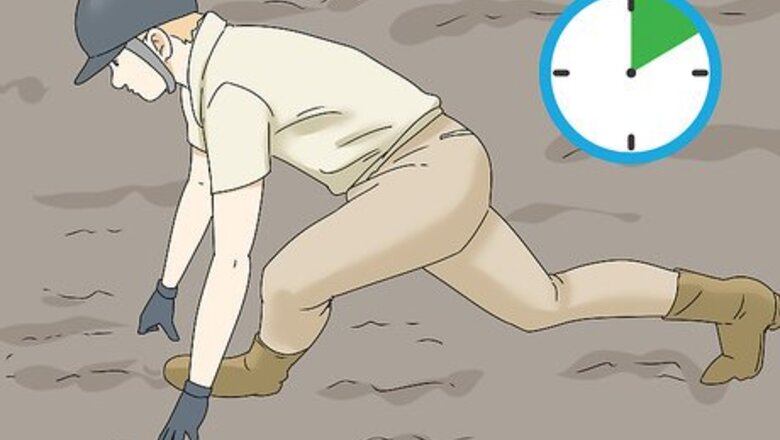
views
Positioning Yourself on the Horse
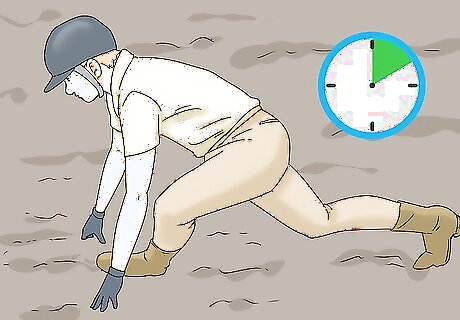
Start slowly in 10-minute increments to build your muscles and be safe. Riding without stirrups can be a jolt to your muscles! Even if you ride regularly, removing the stirrups will challenge different muscles than the ones you normally use. Start out in 10-minute increments every time you ride to begin building up those muscles. Always take time to stretch before and after you ride to prevent any injuries.
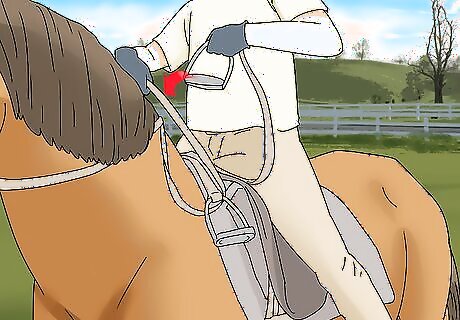
Remove the stirrups or cross them over the top of the saddle. The first part of riding without stirrups is actually getting rid of them. If you’re nervous, just cross each stirrup over the saddle so they aren’t bouncing around and hitting you or your horse. If you feel more confident, remove them from the saddle completely. If the stirrups are crossed over the saddle, you can lower and use them if you find yourself getting panicked.

Keep your legs in the same position as if the stirrups were there. Don’t kick your legs out or fold them back. Let them bend gently at the knee, and pretend that the stirrups are still there. Luckily, your position for riding without stirrups is the same as riding with them. There isn’t much more to remember or add to your repertoire, so you can really focus on your balance and form.

Let your weight settle at your hips, and sit firmly in the saddle. Instead of trying to hold yourself up or sit forward, find your center of balance in your hips and let your energy flow from there. Keep yourself firmly in the saddle and think of your hips as the anchor point—they really shouldn’t move much at all. Don’t worry too much about your knees or calves. They shouldn’t be used any more than they would be if you were riding with stirrups.
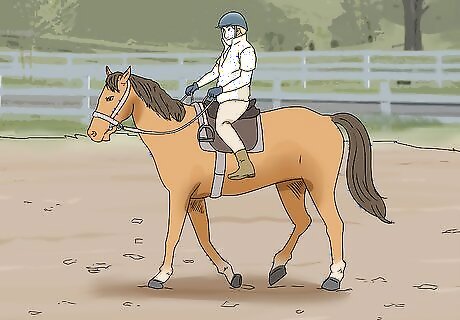
Keep your shoulders, hips, and heels lined up. Practicing good posture is essential to riding a horse safely, and it’s especially important when riding without stirrups. Position your torso so that your shoulders are in line with your hips. Those should, in turn, be in line with your heels. Core strength is really important in horseback riding. If you aren’t already, start doing some strengthening exercises 4 to 5 times a week.
Walking and Trotting without Stirrups
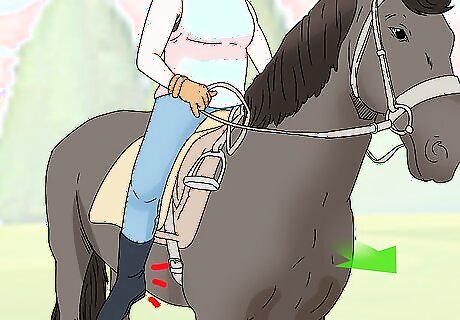
Use your heels to signal to your horse like you normally would. Gently use your heels and click your tongue to tell your horse that you’re ready to begin a gentle walk. Start off slow, and don’t ask your horse to trot or canter. A slow walk gives you time to adjust your position and get used to the feeling of riding without stirrups.
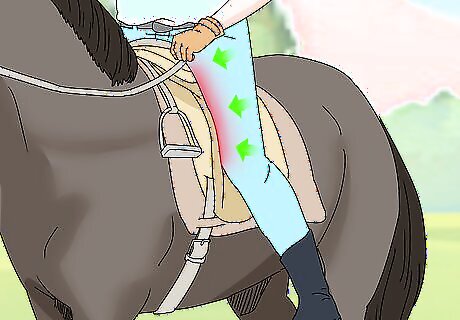
Hold onto the horse with your inner thighs. Keep your balance in your hips, and grip the horse between your upper thighs. Avoid using your knees, calves, hands, or feet to hold onto the horse. Remember to keep your shoulders, hips, and heels in line. Keep in mind that you can always stop the horse and readjust your position if you need to.
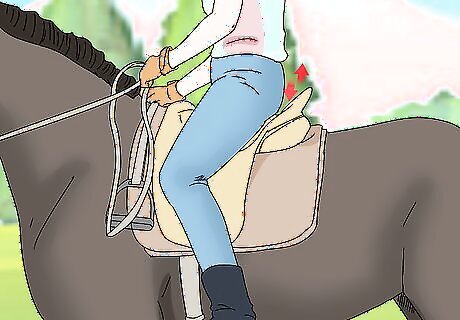
Do a sitting trot to get the feel for riding without stirrups. Once you’ve experienced walking without stirrups and feel like you have your balance, move the horse into a gentle trot. Do this for just a few minutes at a time to get used to the feeling in your legs and core. Keep your legs in the normal riding position, and focus on where your center of gravity is to help you keep your seat.
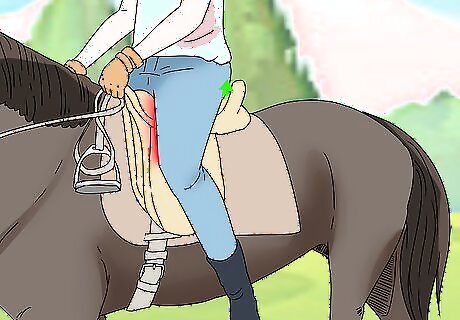
Grip with your thighs to help you post and get up out of the saddle. Once you’re ready to post, use your upper thighs and the momentum from the trot to help raise you up and down in your seat along with the horse’s gait. Don’t pull the horse’s head with your hands or clench the horse between your knees. If you feel yourself slipping, sit back down in your seat and slow your horse down or bring it to a complete stop.
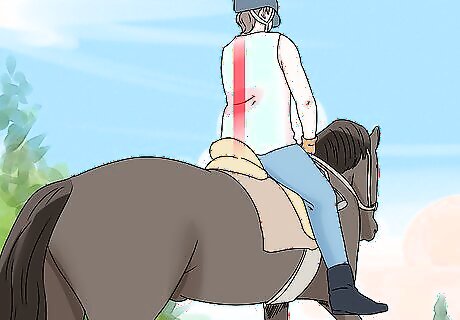
Keep your balance in the center, rather than leaning to either side. Even when making turns, use your core strength to keep your balance centered on the horse. Avoid slipping to either side so you don’t lose your seating. Starting slow is the best way to learn. If your horse is going too fast on turns and you don’t have yourself situated right, you could easily fall off.
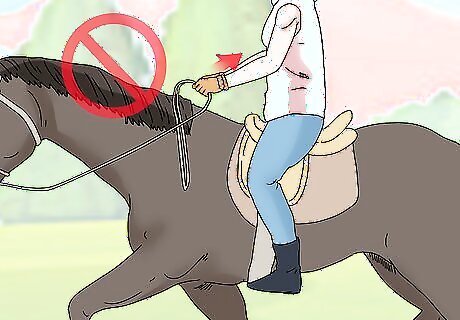
Avoid using your hands for balance, as that will confuse the horse. Keep in mind that your hands are used to guide the horse. If you pull on the reins to keep your balance, you’ll confuse the horse. Make a conscious effort to keep your hands in the same position during the entire walk or trot. If needed, have someone else lead the horse while you practice your balance and position. This will ensure you don’t accidentally pull on the horse’s head.
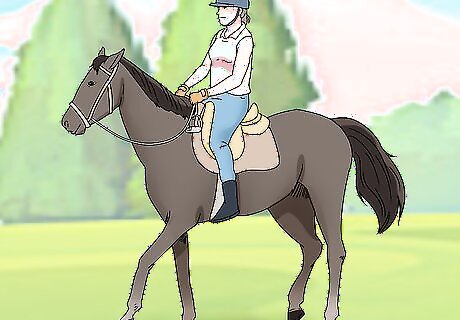
Slow down if you feel you’re losing your balance, and keep practicing! Remember, you are in control. At any time, you can slow down the horse and come to a stop to reposition yourself or get your bearings. And when you start to feel sore, switch to riding with stirrups for the rest of your session. Stick with consistent practicing, and you’ll be able to do longer stretches without stirrups in no time! If you know someone who is experienced with riding without stirrups, ask if you can watch them to get some tips.
















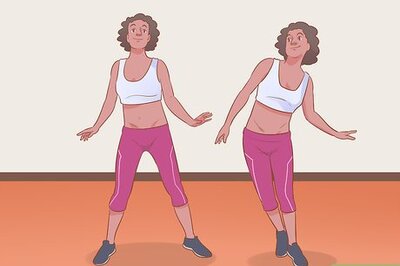

Comments
0 comment